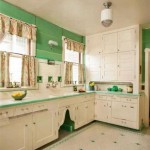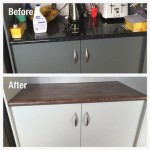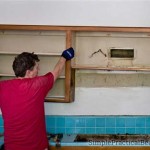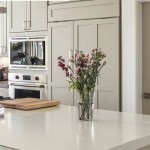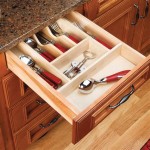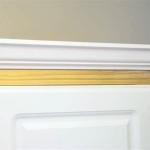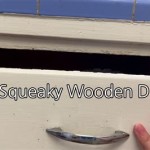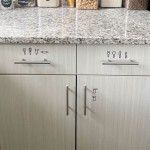Shoe Molding Under Kitchen Cabinets: Aesthetics and Functionality
Shoe molding, also known as base shoe or quarter round, is a narrow, concave molding applied where the vertical surface of a baseboard or cabinet meets the floor. While often associated with baseboards in living spaces, its application extends to the underside of kitchen cabinets, serving both aesthetic and practical purposes. This article explores the reasons for installing shoe molding under kitchen cabinets, the types of molding available, the installation process, and associated considerations.
Kitchen cabinets, particularly those installed as base cabinets, seldom achieve a perfectly flush contact with the floor. Imperfections in the flooring, whether slight unevenness or subtle dips, invariably leave small gaps. These gaps, regardless of their minimal size, can accumulate dirt, debris, and even moisture, leading to unhygienic conditions and potential damage over time. Shoe molding offers a solution by effectively concealing these gaps, creating a visually appealing and functional barrier.
The decision to install shoe molding under kitchen cabinets hinges on multiple factors, including the homeowner's preference, the architectural style of the kitchen, and the existing floor and cabinet conditions. While not always mandatory, the practice is widely recommended, particularly in kitchens prone to spills or those seeking a refined, finished appearance.
Aesthetic Enhancement
One of the primary reasons for installing shoe molding is the visual improvement it provides. By covering the often irregular and visually unappealing gap between the cabinet and the floor, shoe molding creates a cleaner, more polished aesthetic. This subtle detail significantly contributes to the overall impression of the kitchen, elevating its perceived value and sophistication.
The visual impact of shoe molding is further amplified by the available design options. It can be matched to the color and style of the cabinets, creating a seamless transition. Alternatively, it can be painted or stained to complement the flooring, providing a subtle contrast that enhances the visual interest of the space. The flexibility in design allows for personalization that aligns with the overall kitchen design theme.
Furthermore, shoe molding can visually correct minor imperfections in the flooring or cabinet installation. Even slight misalignments or variations in floor height can be subtly masked by the molding, presenting a more uniform appearance. This is particularly beneficial in older homes where perfectly level floors are uncommon.
Beyond the practical considerations, the selection of shoe molding material and profile can dramatically shift the overall aesthetic of the kitchen. Simple, minimalist profiles offer a contemporary feel, while more ornate, decorative moldings enhance a traditional design. The attention to these details can transform a mundane kitchen into a meticulously designed space.
Functional Benefits
Beyond aesthetics, shoe molding offers significant functional benefits, primarily related to hygiene and protection. Sealing the gap between the cabinet and the floor prevents the accumulation of dirt, crumbs, and spilled liquids, creating a more sanitary environment. This is particularly crucial in a kitchen, where food preparation and potential spills are common occurrences.
The presence of shoe molding also deters pests, such as insects and rodents, from accessing the space under the cabinets. These creatures often seek refuge in dark, undisturbed areas. By eliminating the gap, shoe molding removes a potential entry point and nesting site, contributing to a cleaner and healthier kitchen environment.
Moreover, shoe molding protects the base of the cabinets from moisture damage. Accidental spills or cleaning efforts can easily cause water to seep under cabinets without molding, potentially leading to warping, rotting, or mold growth. Shoe molding acts as a barrier, deflecting water and preventing it from reaching the cabinet's base, thus extending its lifespan.
In addition to preventing water damage, shoe molding also protects the floor from scratches and scuffs caused by cleaning tools or accidental impacts. The molding absorbs the impact, preventing direct contact between the cabinet and the floor, thereby preserving the floor's surface and finish.
The ease of cleaning is another significant advantage. Shoe molding provides a smooth, easily accessible surface that can be wiped clean, preventing the buildup of grime and debris. This simplifies routine kitchen maintenance and contributes to a consistently clean and hygienic environment.
Installation Process and Material Considerations
The installation of shoe molding under kitchen cabinets is a relatively straightforward process, generally requiring basic carpentry skills and tools. However, careful planning and execution are essential for a professional and long-lasting result.
The initial step involves measuring the perimeter of the base cabinets to determine the total length of shoe molding required. Adding an extra 10-15% to account for cuts and waste is advisable. Careful consideration should be given to the corners, which typically require mitered cuts at a 45-degree angle to create a seamless joint. Precision in these cuts is critical for a visually appealing finish.
Before installing the molding, the surface of the cabinets and the floor should be thoroughly cleaned and dry. This ensures proper adhesion of the adhesive caulk or the secure fastening of nails or screws. Any existing debris or moisture can compromise the integrity of the installation.
The shoe molding can be attached using several methods, including adhesive caulk, finish nails, or screws. Adhesive caulk is a suitable option for smooth, even surfaces. Finish nails provide a more secure hold, especially on uneven floors. Screws offer the strongest attachment but require pre-drilling to prevent splitting the molding.
When using nails or screws, it is important to countersink the fasteners slightly below the surface of the molding. The resulting holes can then be filled with wood filler, sanded smooth, and painted or stained to match the molding. This creates a seamless, professional finish.
Several materials are commonly used for shoe molding, each offering distinct advantages and disadvantages. Wood, such as pine, oak, or maple, is a popular choice due to its versatility, durability, and ability to be painted or stained. However, wood is susceptible to moisture damage and may require sealing or water-resistant finishes in kitchens prone to spills.
PVC (polyvinyl chloride) is another common material, known for its water resistance, durability, and low maintenance requirements. PVC molding is ideal for kitchens where moisture is a concern. It is also resistant to insects and rot, making it a long-lasting option. However, PVC molding may not be as aesthetically pleasing as wood and may not be suitable for all design styles.
MDF (medium-density fiberboard) is a composite material made from wood fibers and resin. MDF molding is less expensive than solid wood but can be easily painted. However, it is less resistant to moisture than wood or PVC and should be properly sealed before installation in a kitchen environment.
Choosing the appropriate material depends on several factors, including the budget, the desired aesthetic, and the expected exposure to moisture. Careful consideration of these factors ensures a successful and long-lasting installation.
Once the shoe molding is installed, a final bead of caulk can be applied along the top edge, where the molding meets the cabinet. This creates a watertight seal, further preventing moisture from seeping under the cabinets. The caulk should be smooth and consistent, blending seamlessly with the molding and the cabinet surface.
Regular inspection and maintenance of the shoe molding are essential for preserving its aesthetic appeal and functional benefits. Any signs of damage, such as cracks, chips, or discoloration, should be addressed promptly. Minor repairs can often be made with wood filler or touch-up paint. In severe cases, replacement of the damaged section may be necessary.
Cleaning the shoe molding regularly with a mild detergent and water helps prevent the buildup of grime and debris. Avoid using harsh chemicals or abrasive cleaners, which can damage the surface and finish of the molding. Gentle cleaning practices will prolong the lifespan of the molding and maintain its appearance.
Installing shoe molding under kitchen cabinets is a worthwhile investment that enhances both the aesthetic appeal and functional performance of the kitchen. By concealing gaps, preventing moisture damage, and deterring pests, shoe molding contributes to a cleaner, healthier, and more visually appealing kitchen environment. Careful planning, material selection, and installation techniques are crucial for achieving a professional and long-lasting result.

Hampton Bay Designer Series 0 625x96x0 625 In Shoe Molding White Amsh Wh The Home Depot

Primed Shoe Molding Bella Tucker

Hampton Bay 91 5 In W X 0 75 H Shoe Molding Brindle Kamtx Bdl The Home Depot

Hampton Bay 91 5 In W X 0 75 H Shoe Molding Dove Gray Kamtx Dv The Home Depot

5 Molding Styles That Customize Your Cabinetry

Blog Talk Does Your Quarter Round Match Cabinets Kitchen Rounded

Base Shoe

Kitchen Molding And Architectural Elements Style Up Cabinets That Look Like Furniture Base Shoe

How To Add Molding The Top Of Your Cabinets Young House Love

How To Add Toe Kicks A Window Sill Young House Love

